Dry fire training is the practice of firing, or practicing the manipulation of, a firearm without ammunition. That seems easy enough to understand, but let’s take a look at the reasons why someone would want to practice dry firing, as well as some drills that are helpful.
She Shoots 2 is sponsored by CrossBreed Holsters
First, it’s vitally important to verify that the gun is completely unloaded before beginning any dry fire practice. Check and then check again! Next, remove all ammunition from the area. If you’re using a rimfire gun, insert a snap cap (dummy round) to avoid damaging the firing pin.
One of the most important aspects of dry fire practice is learning the proper trigger technique. Each trigger is uniquely different and by watching the gun as you slowly squeeze the trigger, you’ll be able to see if the gun (and your aim point) stays steady or not. If not, assess your trigger finger placement, as well as any tightening of your grip.
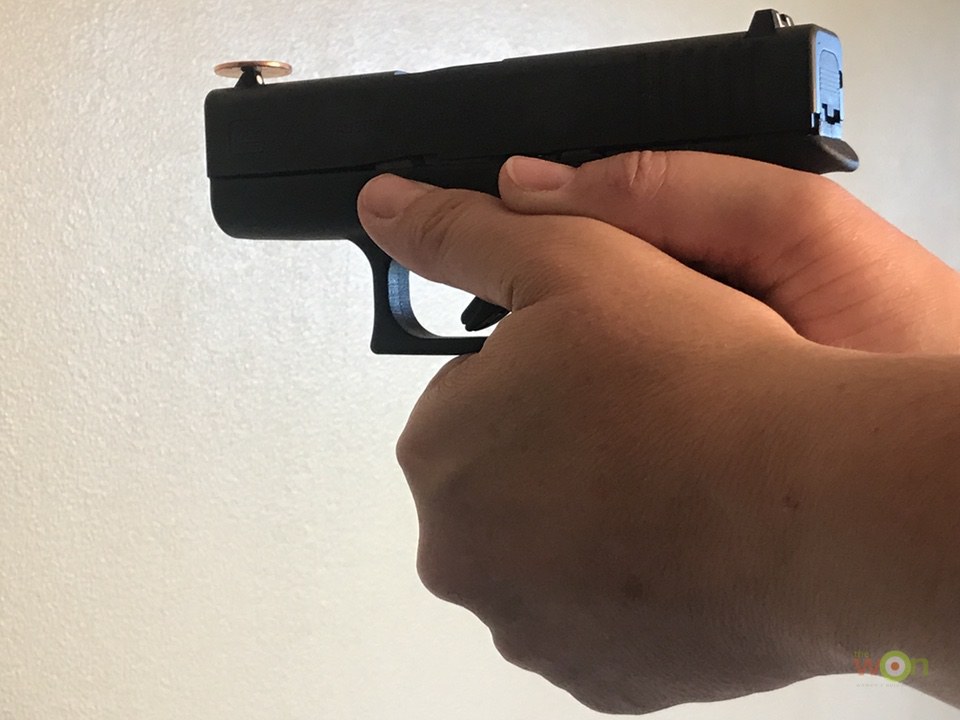
A popular dry fire drill to assess trigger control is the Balance Drill. To start, open the slide to check that it’s unloaded. Release the slide. Place an empty casing or a penny on the front sight. Establish your grip and extend your arms to firing position. As you slowly squeeze the trigger, the firearm shouldn’t move, and thus, the casing or coin will remain balanced on the front sight. To repeat the drill, reset your trigger and rebalance the coin or casing.
Anyone who carries a firearm should practice this drill. Knowing how to safely and quickly draw your gun could mean the difference between life and death in a self-defense scenario. Make sure your firearm is unloaded and holstered. If you typically carry concealed, practice with a cover garment similar to what you’d wear every day.
Start with your hands to your side. With your off-hand, reach across your body to grab onto the cover garment, pulling it up and out of the way of the firearm. With your strong hand, reach down and get a good firing grip on the gun. Draw the gun out of the holster and rotate it toward the target, making sure that it doesn’t cover (muzzle) any part of your body. From this point, your off-hand should join your strong hand, gripping the gun as you extend toward the target. Acquire your sights, place your finger on the trigger, and press the trigger to dry-fire. Re-holster and repeat.
We recommend finding a certified pistol instructor to observe your draw and reholstering techniques. You should practice perfect.
In addition to dry fire drills with your pistol, there are also training pistols and systems that can spice up your practice time.
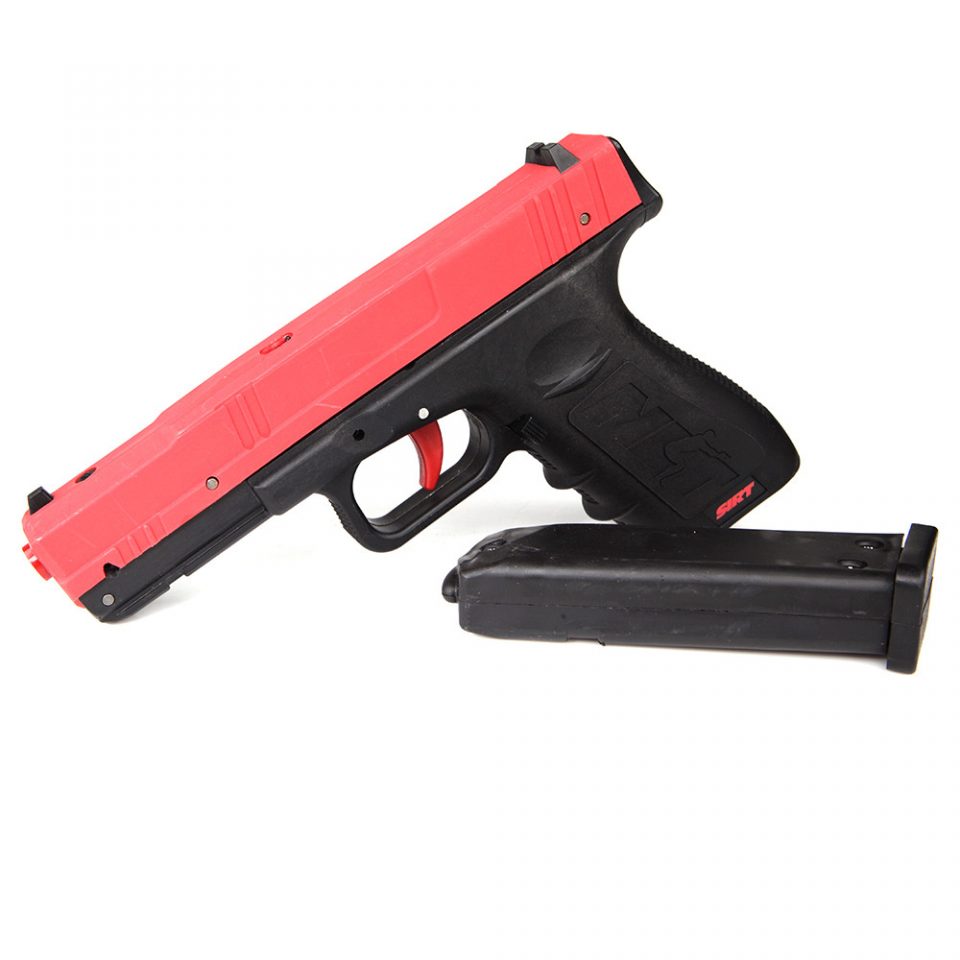
SIRT (Shot Indicating Resetting Trigger) pistols are replicas of either small pockets guns or full-sized handguns. The laser indicator provides immediate feedback to show if you’re flinching while squeezing the trigger. It also has the simulated weight of a real firearm, along with a detachable magazine. This allows the user to practice drawing from a holster or magazine reload techniques.
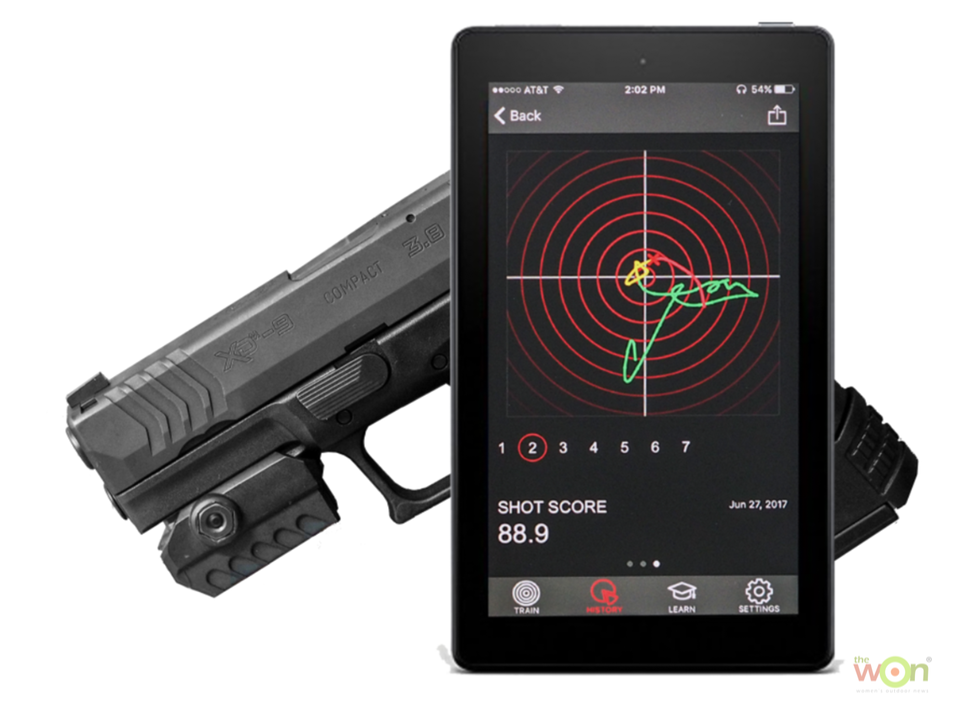
Another option is the MantisX training system. This system comes with a device that attaches to your firearm, and a downloadable smartphone app. After pairing the unit to the application using Bluetooth, the device measures and tracks the small amount of movement when aiming at a given point. Each shot is analyzed and displayed on your phone, showing a blue line for hold/sighting, yellow for trigger pull, and red for shot breaking and recoil pattern. The system works with live fire, dry fire, airsoft and CO2.
Now it’s time to test your skills on the range! A great way to diagnose and eliminate flinching is by using the Ball & Dummy Drill.
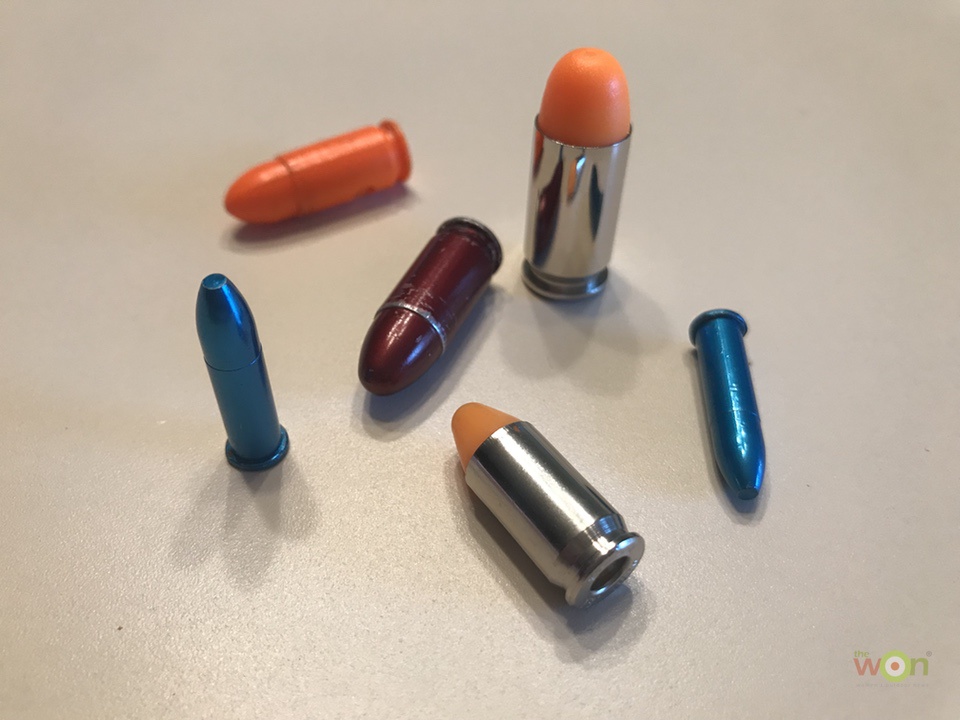
This drill works best if you have a partner helping you, but can be done by yourself, too. If you have someone with you, have them load your magazine, mixing dummy rounds along with live cartridges. If you’re shooting a revolver, leave one (or more) of the chambers empty. Take aim and shoot as you normally would, keeping the gun steady and sights lined up on the target. You, or your partner, should be able to see if you flinch, or anticipate the gun firing, when you come to the dummy round.
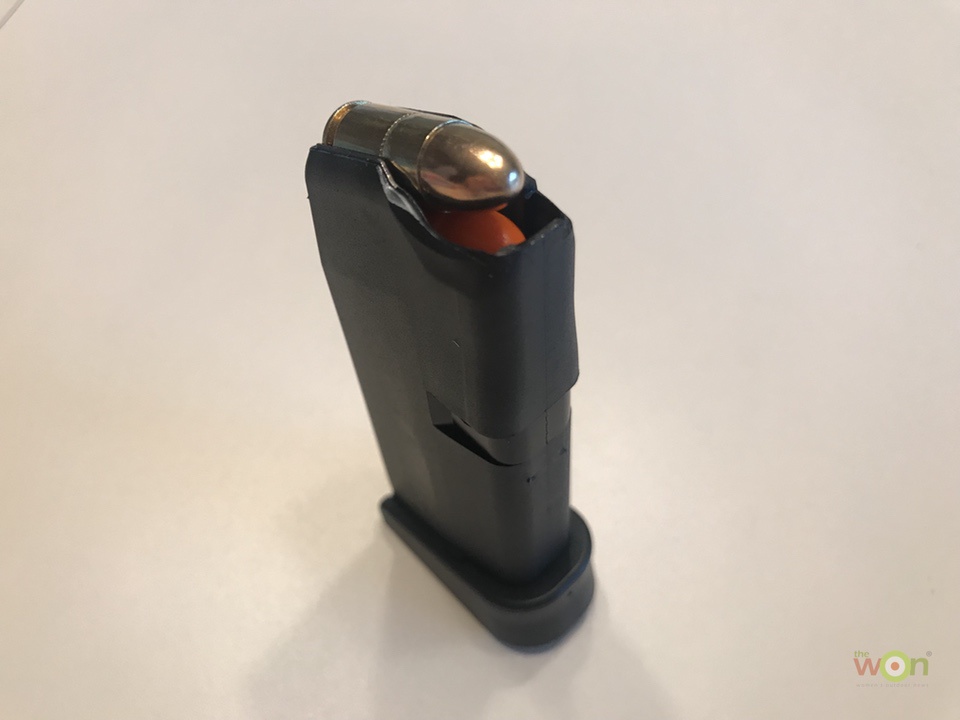
Plan to spend around 10-15 minutes for each dry fire session. Any longer than that and it’ll start to feel monotonous and you’ll lose focus on the details.
Getting the proper sight alignment and sight picture, followed by smooth trigger press, develops good muscle memory. Muscle memory simply means that skills become part of your subconscious. It frees your mind to be able to focus on tactical skills rather than how to shoot the gun. Those components allow you to have a crisp, clean trigger break without upsetting your firearm. When you bring those skills to the range, your point of aim and impact will be the same, resulting in accurate shots, not to mention improved confidence.
Stacy Bright is a certified pistol and CCW instructor in Springfield, Missouri. Learn more at her website.
Freelance writer Stacy Bright holds instructor certifications from the NRA in Pistol & Rifle, as well as being an Range Safety Officer and Refuse to be a Victim instructor. In addition to her NRA credentials, she also is a Missouri CCW instructor and teaches various other home and personal defense courses. “In a field dominated by men, I feel I bring a unique perspective to firearms and training, especially to women. I'm passionate about educating, empowering and developing confidence in those I train. In November of 2014, I started the Southwest Missouri chapter of The Well Armed Woman,” said Stacy. Stacy lives in southwest Missouri, and has been married for 20 years. Visit TWAW Facebook page: The Well Armed Woman-Springfield, MO Chapter. View all posts by Stacy Bright